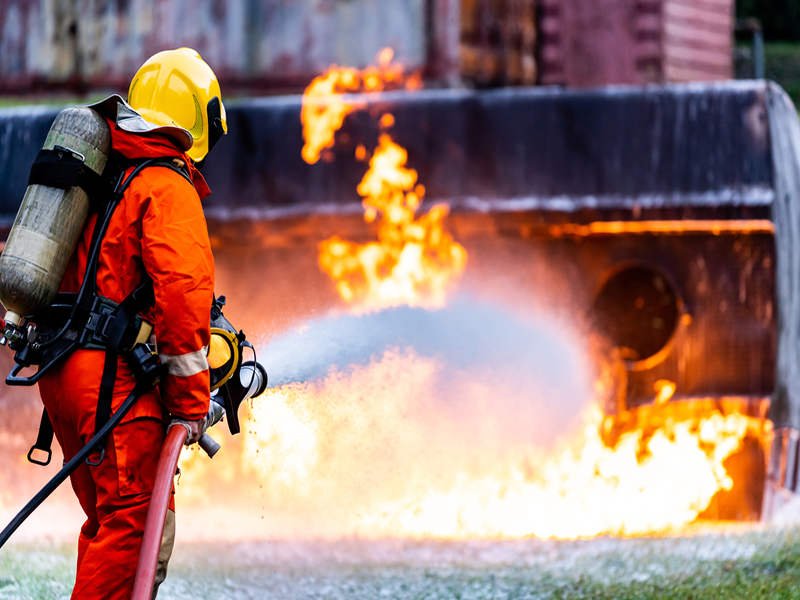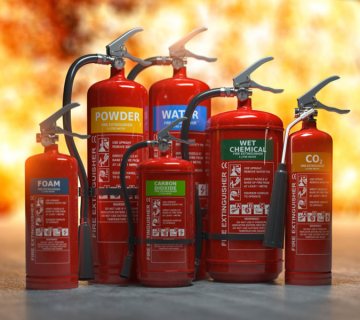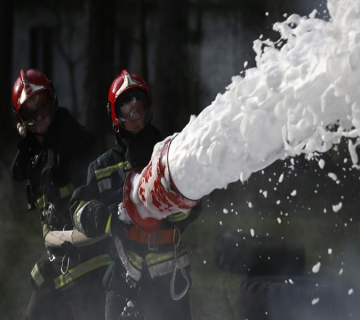Fire-fighting foams have long been a critical tool in combatting fires involving flammable liquids, aircraft, and industrial hazards. As regulations tighten and environmental awareness grows, the demand for high-performance, eco-friendly foams is driving innovation—not just in formulation, but in testing methodologies as well. Today’s foam testing practices are evolving rapidly to ensure both efficacy and environmental responsibility.
1. Next-Generation Live Fire Testing
Traditional live fire testing—such as those outlined in standards like UL 162 and EN 1568—remain essential. However, advancements in test design now offer more precise simulation of real-world conditions. Modern facilities incorporate variable fuel types, wind simulation, and heat flux sensors to monitor performance in highly dynamic environments. Some test setups are even integrating drones and thermal imaging for real-time data capture and performance analytics.
2. Synthetic Fuel Surrogates for Safer Evaluation
To reduce the risks and environmental impact associated with hydrocarbon fires, researchers are turning to synthetic fuel surrogates. These allow for repeatable, controlled burns with fewer toxic emissions. The use of surrogate fuels makes it easier to compare different foam types under identical conditions, improving reliability in performance benchmarking.
3. Environmental Persistence and Biodegradability Testing
As fluorine-free foams become more popular, assessing their environmental impact is just as important as evaluating their fire suppression capabilities. Advanced biodegradability assays, PFAS-free verification tests, and toxicity modeling are now standard practice. Laboratory techniques such as liquid chromatography and high-resolution mass spectrometry help verify that foams break down effectively without lingering contaminants.
4. Foam Behavior Modeling with Computational Tools
Computational fluid dynamics (CFD) and fire modeling software are becoming indispensable in predicting foam spread, heat resistance, and extinguishment times. These tools allow manufacturers and fire safety engineers to simulate a wide range of fire scenarios digitally, optimizing formulations before a single drop is produced. AI-assisted modeling is also being explored to predict foam behavior based on chemical composition.
5. Dynamic Surface Tension and Viscosity Profiling
Understanding how foam behaves at the surface of a burning liquid is key. Emerging testing technologies measure surface tension and viscosity in real time under changing thermal conditions. This data helps determine how quickly and effectively foam blankets form and whether they can withstand re-ignition threats.
6. Cold Weather and Multi-Climate Testing
Fire doesn’t just happen in ideal lab conditions. Cutting-edge test protocols now include climate chamber simulations that expose foam to sub-zero temperatures, tropical humidity, or rapid pressure changes. These tests are essential for validating foam performance in Arctic regions, deserts, and high-altitude environments.
7. Digital Twin Test Environments
One of the most futuristic developments in foam testing is the rise of digital twin environments. These virtual models replicate physical test facilities and enable continuous data input from real-world deployments. The result is a powerful platform for iterative testing and improvement, integrating field data with lab results in near real-time.
—————————————————————————————————————————————–
Conclusion
The future of fire-fighting foam testing is high-tech, data-driven, and environmentally conscious. As foam technology continues to evolve to meet safety and sustainability goals, so too must our testing strategies. Whether through live burn innovations, AI modeling, or green chemistry analysis, the goal remains the same: ensuring fire-fighting foams can perform when it matters most—safely, reliably, and responsibly.




No comment